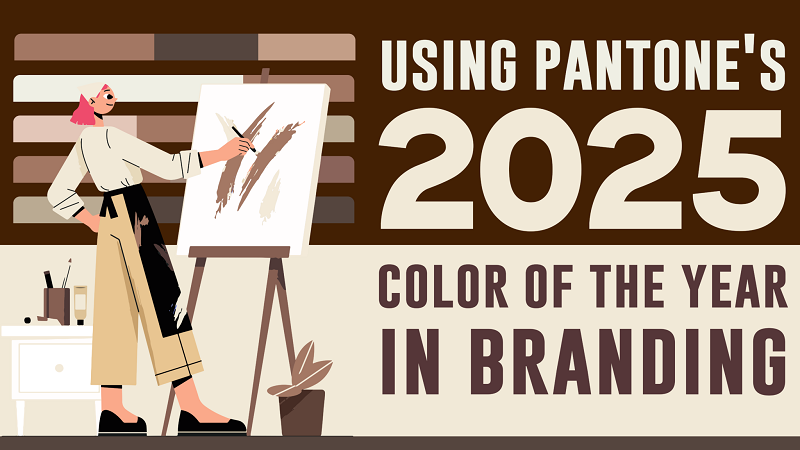The importance of a logo cannot be overstated. It is the visual embodiment of a company’s identity, and a well-designed logo has the power to elevate a brand, while a poor logo can diminish its reputation. No matter how exceptional your services or unique your products may be, a poorly designed logo will make it harder to grab the attention of your audience and leave a lasting impression.
Even the most skilled designers face challenges when crafting a compelling logo. To help you avoid some common pitfalls in the logo design process, we’ve compiled a list of six major mistakes logo designers often make. By understanding and avoiding these, you’ll be better equipped to create logos that are not only aesthetically pleasing but also strategically effective.
1. Relying Too Much on Trends
Design trends come and go, often dominating the industry for a brief period. One of the most common mistakes logo designers make is designing logos based on current trends, thinking that this will make them more appealing. For example, the “shadow breaks” trend — where a logo’s shapes are purposefully cut off with shadow effects — might look modern at first, but it can quickly feel outdated.
A logo should be timeless and represent the brand in the long run. While it’s okay to draw inspiration from trends, your design should focus on creating something unique and enduring. Trends fade, but a strong logo should stand the test of time and continue to resonate with the brand’s audience for years.
2. Inappropriate Use of Typefaces
Typography plays a crucial role in logo design. A well-chosen typeface can make a logo memorable, while a poor choice can make it look unprofessional. One common mistake is using too many different fonts in a single logo. While it may seem like a good idea to combine multiple typefaces to add flair, it often leads to a cluttered and amateurish design.
To avoid this, aim to use just one or two typefaces in your logo design. Each typeface has its own personality, and it’s important to select one that aligns with the brand’s identity and message. The right typeface can enhance the logo’s meaning, while a mismatch can create confusion or weaken the overall impact.
3. Poor Colour Selection
Color is one of the most powerful elements in logo design, and choosing the right color scheme is essential to conveying the brand’s personality and values. Unfortunately, many designers make the mistake of choosing colors arbitrarily, without considering the psychological effects of color or the company’s core message.
Before choosing colors, always ensure you understand the emotional impact they may have. For example, blue often represents trust and professionalism, while red can signify energy and passion. Additionally, it’s important to first test the logo in black and white before introducing colors. A well-designed logo should look just as effective in grayscale as it does in color.
Avoid rushing into color choices. A good logo will work in various color formats, but it should still be impactful in its black and white form.
4. Using Raster Images
One of the biggest technical mistakes in logo design is relying on raster images, such as JPEGs or PNGs. Raster images are made up of pixels, meaning they are resolution-dependent. If you scale a raster image up or down, the quality degrades, and your logo may become blurry or distorted.
To ensure your logo is versatile and scalable, always design logos in vector format. Tools like Adobe Illustrator or CorelDRAW allow you to create vector logos, which are resolution-independent and can be scaled to any size without losing quality. Whether your logo appears on a business card or a billboard, a vector logo will maintain its clarity and integrity.
5. Creating a Complex Design
While intricate designs can be visually striking, logos should prioritize simplicity. A common mistake is overcomplicating the design by adding too many elements, such as excessive colors, intricate details, or too many icons. A cluttered logo can confuse your audience and detract from the brand’s message.
The best logos are simple, clear, and easily recognizable. Think of iconic logos like Apple, Nike, and McDonald’s — each is straightforward yet memorable. When designing a logo, aim for simplicity. A simple design is easier to reproduce across various media, more memorable for your audience, and more adaptable to different branding materials.
6. Plagiarism
One of the most detrimental mistakes a logo designer can make is plagiarism. While it might seem tempting to copy an existing logo design or borrow heavily from others’ work, this is not only unethical but can also result in legal consequences.
Your logo is meant to represent a brand’s unique identity. When you copy or imitate someone else’s logo, it undermines the authenticity of the brand and damages its reputation. Additionally, plagiarism can lead to copyright infringement issues, which may result in costly legal battles or the need for a complete rebranding.
To avoid this, always strive for originality. Take the time to research the brand, its competitors, and its target audience to create a logo that truly represents the company’s unique identity. Developing an original logo that stands out will not only build a stronger connection with the audience but also protect the brand’s legal rights.
Final Thoughts
Designing a great logo is a delicate balance of creativity, strategy, and technical skill. By avoiding these six common mistakes — relying too much on trends, improper use of typefaces, poor color selection, using raster images, creating overly complex designs, and plagiarizing — you can ensure that your logo designs are professional, memorable, and effective.
Remember, a logo is more than just an image; it is the face of the brand. It should communicate the essence of the business in a way that resonates with the audience and stands the test of time. By focusing on simplicity, originality, and thoughtful design choices, you can create logos that truly capture the spirit of the brands you represent.




